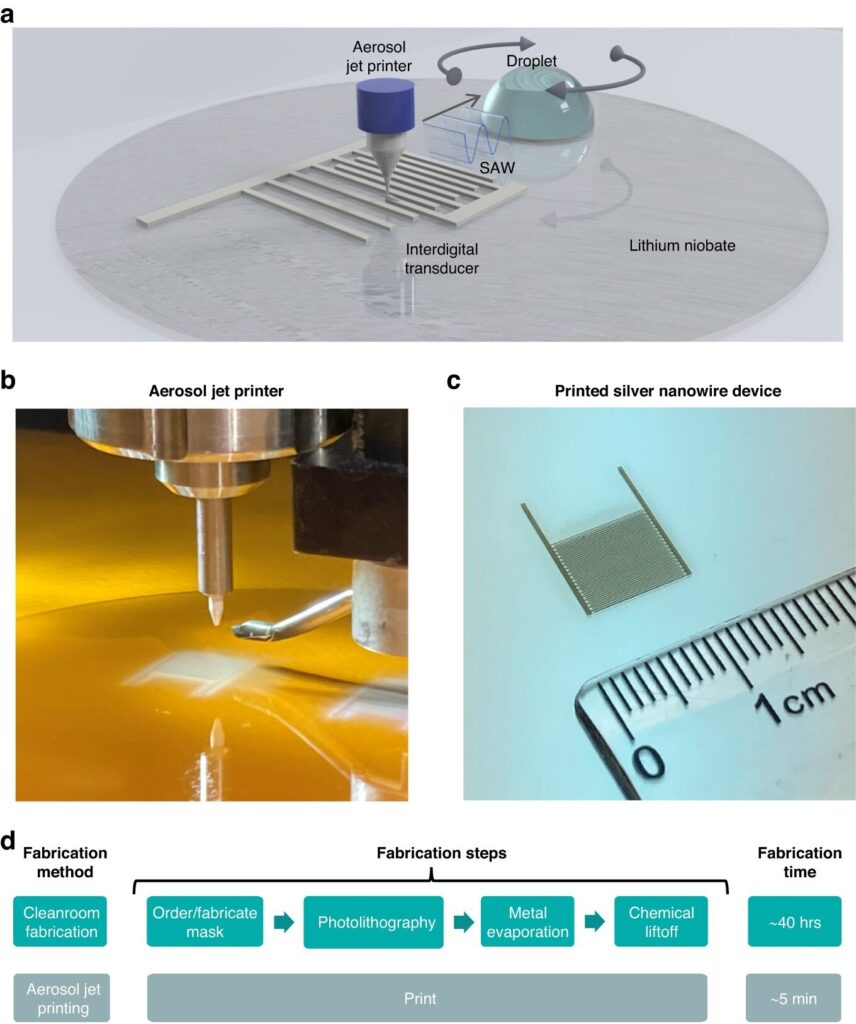Surface acoustic wave (SAW) technologies, known for their high precision and rapid actuation, are essential to microfluidics and affect a broad spectrum of research areas. However, traditional fabrication methods are time-consuming, intricate, and necessitate costly cleanroom facilities.
One novel method overcomes these constraints by utilizing aerosol jet printing to create customized devices with various materials, such as silver nanowires and graphene, significantly reducing development time.
In a study published in Microsystems & Nanoengineering, researchers from Duke University and Virginia Tech have pioneered the integration of aerosol jet printing technology into the fabrication of SAW microfluidic devices. This advancement offers a faster, more versatile, and cleanroom-free approach to developing lab-on-a-chip applications, revolutionizing fields from biology to medicine.
In this groundbreaking research, the team utilized aerosol jet printing to fabricate SAW microfluidic devices. This method is a stark contrast to conventional, cumbersome cleanroom processes.
It involves depositing various conductive materials such as silver nanowires, graphene, and poly (3,4-ethylenedioxythiophene) polystyrene sulfonate (PEDOT:PSS) onto substrates to form interdigital transducers, crucial for generating SAWs to manipulate fluids and particles at the microscale.
Remarkably, this method reduces fabrication time from around 40 hours to approximately five minutes per device. The team thoroughly analyzed the acoustic performance of these printed devices using a laser Doppler vibrometer, comparing them with those fabricated in cleanrooms.
The results showed promising potential, with the printed devices demonstrating similar or acceptable performance levels in terms of resonant frequencies and displacement fields. This research represents a significant advancement in microfluidic device fabrication, offering a faster, more adaptable, and efficient alternative to traditional methods.
Dr. Zhenhua Tian, a co-author of the study, said, “This isn’t just a step forward; it’s a leap into the future of microfluidic device fabrication. Our method not only simplifies the process but opens up new possibilities for device customization and rapid prototyping.”
The implications of the new method are vast, offering a more accessible, faster, and cost-effective way to produce microfluidic devices. It has the potential to accelerate research and development in numerous fields, leading to quicker diagnostics, improved drug delivery systems, and enhanced biochemical analyses.
Additionally, the technology’s versatility suggests its adaptability to a wide range of materials and substrates, promising extensive applications across various disciplines.
Provided by
Aerospace Information Research Institute, Chinese Academy of Sciences


